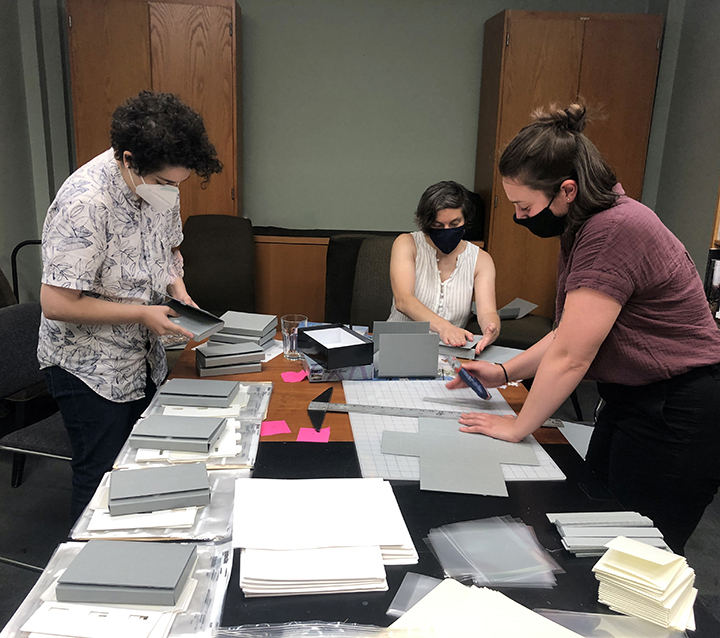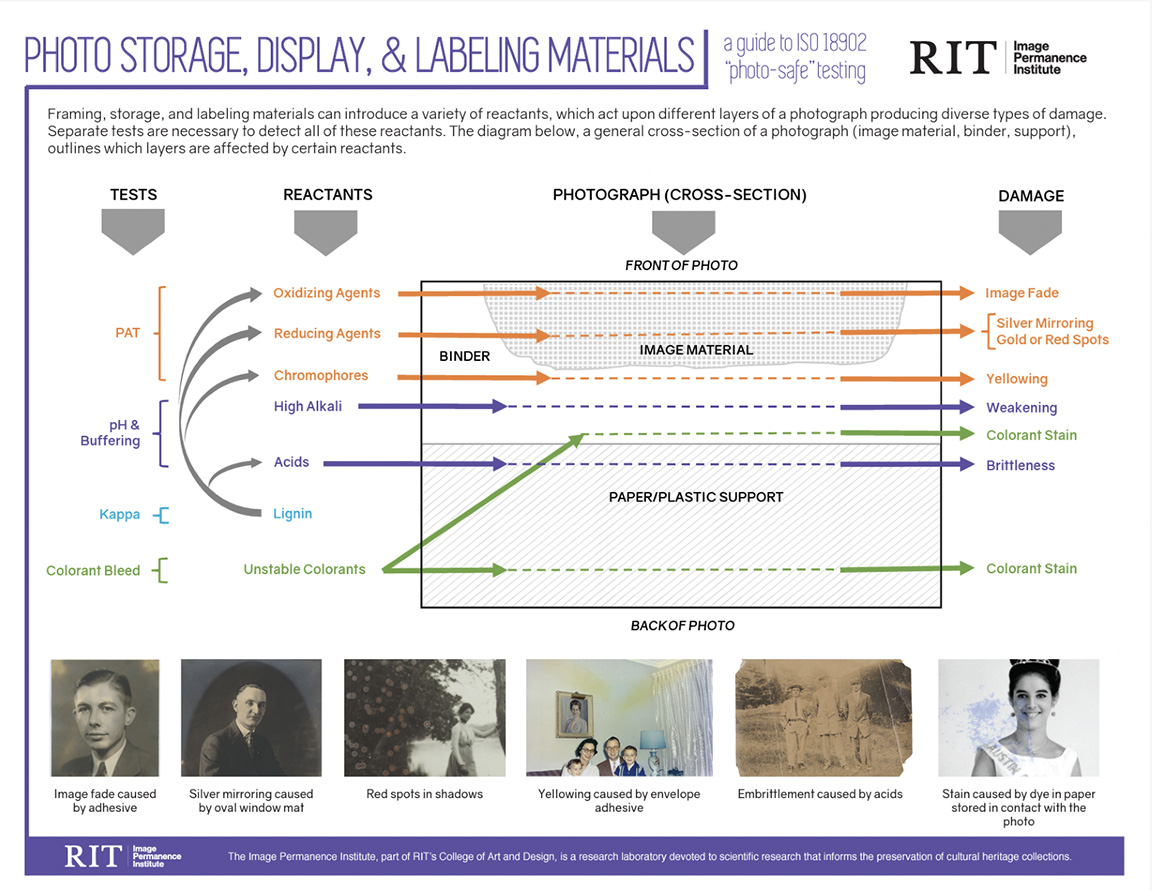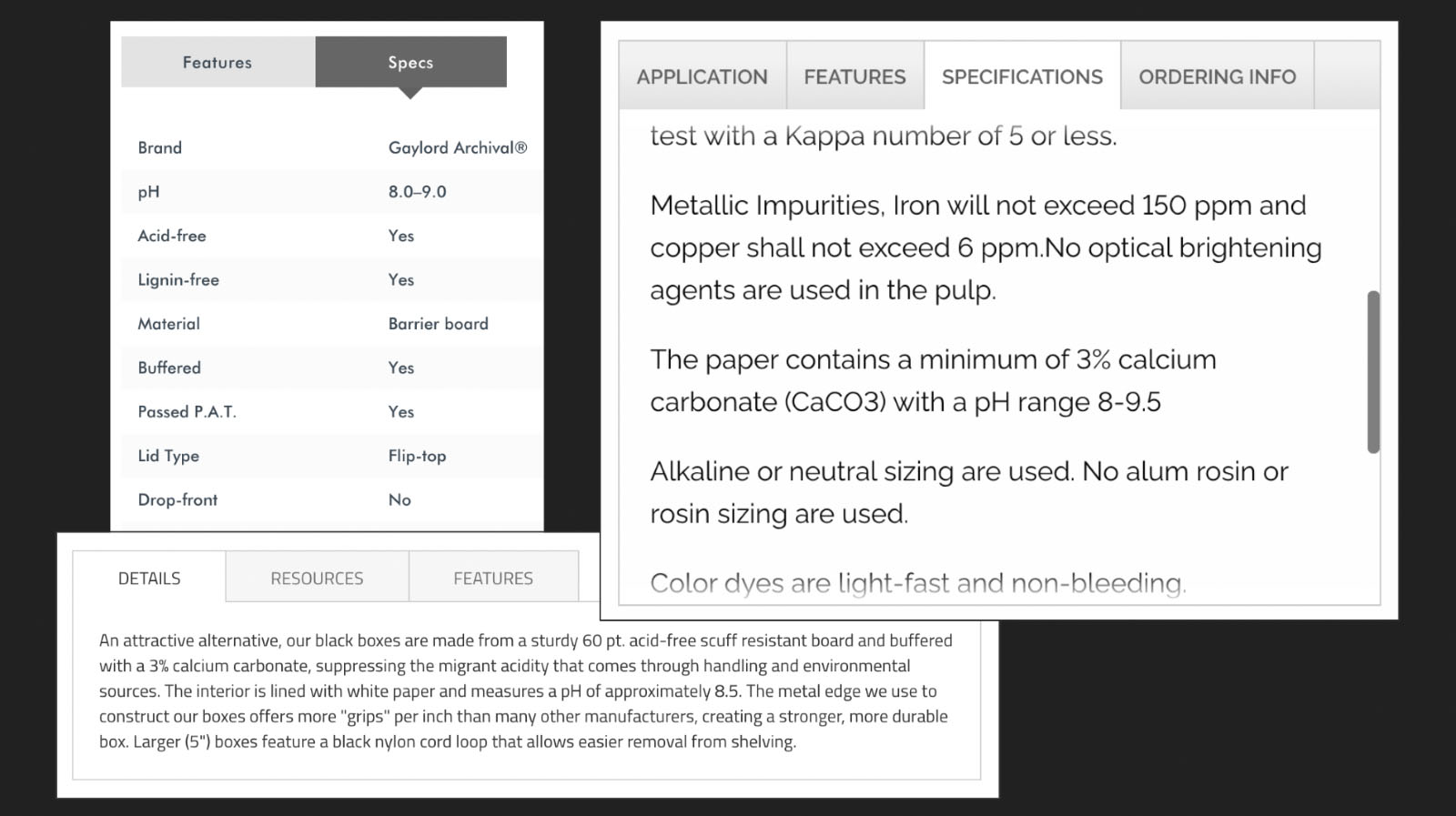
Welcome to our blog series on preservation tips, tailored specifically for collecting institutions dedicated to safeguarding our shared cultural heritage. In this series, we will delve into the essential strategies, best practices, and innovative approaches that institutions and individuals alike can adopt to ensure the long-term preservation of documents, photographs, and other artifacts. We hope this series will provide invaluable insights and practical guidance to help protect and maintain your collections and enhance your preservation efforts.
Today’s post focuses on the importance of housing materials and how to determine if materials meet the standard of archival quality.
If you’re looking to house photographs, documents, memorabilia, or any cultural heritage artifact, you’ll want to use materials that will help preserve the items, not speed up their deterioration. The broad term for these kinds of housing materials is “archival quality.”
Many stores carry photo boxes, page protectors, and other storage that is labeled “photo-safe” or “acid-free.” That is not enough information to determine if the materials used in these products are truly archival quality! For the right storage products, you need to search out suppliers who adhere to an international standard for archival quality.
You may have heard of ISO numbers in relation to film speed, or in a manufacturing setting. The International Organization for Standardization develops specifications for products, services and systems, to ensure quality, safety and efficiency. There are over 22,000 standards from everything from railway engineering to food technology. They answer the question: “what’s the best way of doing this?”
ISO 18902:2013 is titled Imaging materials — Processed imaging materials — Albums, framing and storage materials. This ISO is overseen by a Technical Committee, TC-42, Photography. Because photography is such a sensitive medium, it makes a good baseline with which to judge archival products. If a material is safe to use with photos, you can assume it will be safe for other, more stable, objects.
This standard covers the entire range of products you might use for storage, display, and labeling - paper, plastics, adhesives, printer ink, etc. It tests for material qualities such as acid-free, lignin-free, strength of the alkaline reserve (for buffered papers), and if these materials pass the Photographic Activity Test (PAT). Only materials that meet this standard’s specifications can be considered photo-safe, and thus archival. Note that the standard’s definition of photo-safe refers only to the chemical reactivity of a material and does not apply to how it might interact physically with a photograph or object.
Rochester, NY, is home to the Image Permanence Institute, an academic research center at the Rochester Institute of Technology. They have long been involved in developing international standards, including part of ISO 18902, the Photographic Activity Test (ISO 18916:2007). Among other things, they are an independent laboratory providing testing for ISO 18902. Companies send samples of their products to IPI, where they run a battery of tests.

This chart, available for download from IPI, illustrates the five tests of ISO 18902, what they test for, what part of a photograph is affected, and the damage that can be caused to each layer of the photograph. These tests are the best way of judging whether a material can be considered “archival.”
The Photographic Activity Test (PAT) is a very good measure of archival quality. IPI tests samples of materials by layering them in a very particular order in little jigs, or casings. These are placed in an incubator for 15 days to simulate aging in high heat and humidity. After this tropical sojourn, scientists test those materials for oxidation and reduction reactions, which cause fading, spots, and silver mirroring, and for chromophores (the part of a molecule responsible for its color) which cause yellowing. All of the materials covered in ISO 18902 must pass the PAT. You will often see “Passed PAT” on the label of archival supplies.
The PAT, however, is not the full measure of archival quality and is only one in the series of ISO 18902 tests. The second test is the pH test, which is only performed on paper and adhesives. Acids, naturally occurring in wood pulp used in paper, are damaging to many kinds of materials. On the other end of the spectrum, highly alkaline environments can also cause decay. IPI does a simple pH test on materials, looking for the pH in the neutral range of 6 -7 for unbuffered paper. This is the definition of “acid-free.”
If a paper is buffered, it is still acid-free, but with a little higher pH, in the 8 - 10 range. The bump into alkaline territory for buffered paper is due to the alkaline reserve or amount of calcium carbonate (CaCO3) embedded in the paper during production. This calcium carbonate neutralizes acids either present in the environment or created through deterioration in storage, acting as a buffer and protecting your objects.
The third ISO 18902 test is for the alkaline reserve, and it only applies to buffered paper. IPI soaks a sample of the material in water, then measures the amount of acid necessary to neutralize the alkaline buffering, looking for an alkaline reserve of at least 2% CaCO3. This reserve is what gives buffered paper the additional level of protection against acidification.
The fourth ISO 18902 test, the Kappa test, looks at the amount of lignin present. This test also only applies to paper. Lignin is the “glue” that holds the wood together. During the pulping process of papermaking, lignin is removed from the wood fibers. The most common measurement of lignin is the Kappa number, which IPI measures by breaking down the paper sample back into pulp form, soaking the pulp in a chemical solution, and measuring the results. To be considered archival-quality, housing materials must be considered lignin-free, which means the paper must have a Kappa number of less than 5 on a scale of 1 - 100.
The final test of ISO 18902 is the colorant bleed, and it applies to both paper and labeling materials. IPI tests if dyes or pigments used to either color paper or to write and print on it, have the potential to stain things touching them. The test material is held next to some bond paper and soaked in water to see if anything transfers when it shouldn't. You can be sure that archival paper or inks that have passed ISO 18902 will not bleed.

There is a lot of science behind archival quality storage materials! Luckily, you don’t need to remember all of these measurements and standards. What matters is that you purchase materials from suppliers who are concerned about these numbers. Reputable archival suppliers will list the specifications for their products and include ISO 18902 test results.
Now that you know what the term “archival quality” entails, you can be a more informed consumer and make the best choices for housing and storage materials for your institution’s collections.
Additional Resources:
Conservation Center for Art & Historic Artifacts, Storage and Display Materials: Criteria for Selection
Do you have a preservation topic, question, or creative solution you would like us to cover in this series? Reach us by email at info@DHPSNY.org, or connect with us on the DHPSNY Facebook page or DHPSNY Community Facebook Group.
Cover image: Archival box-making for DHPSNY Planning & Assessment sites, 2022.